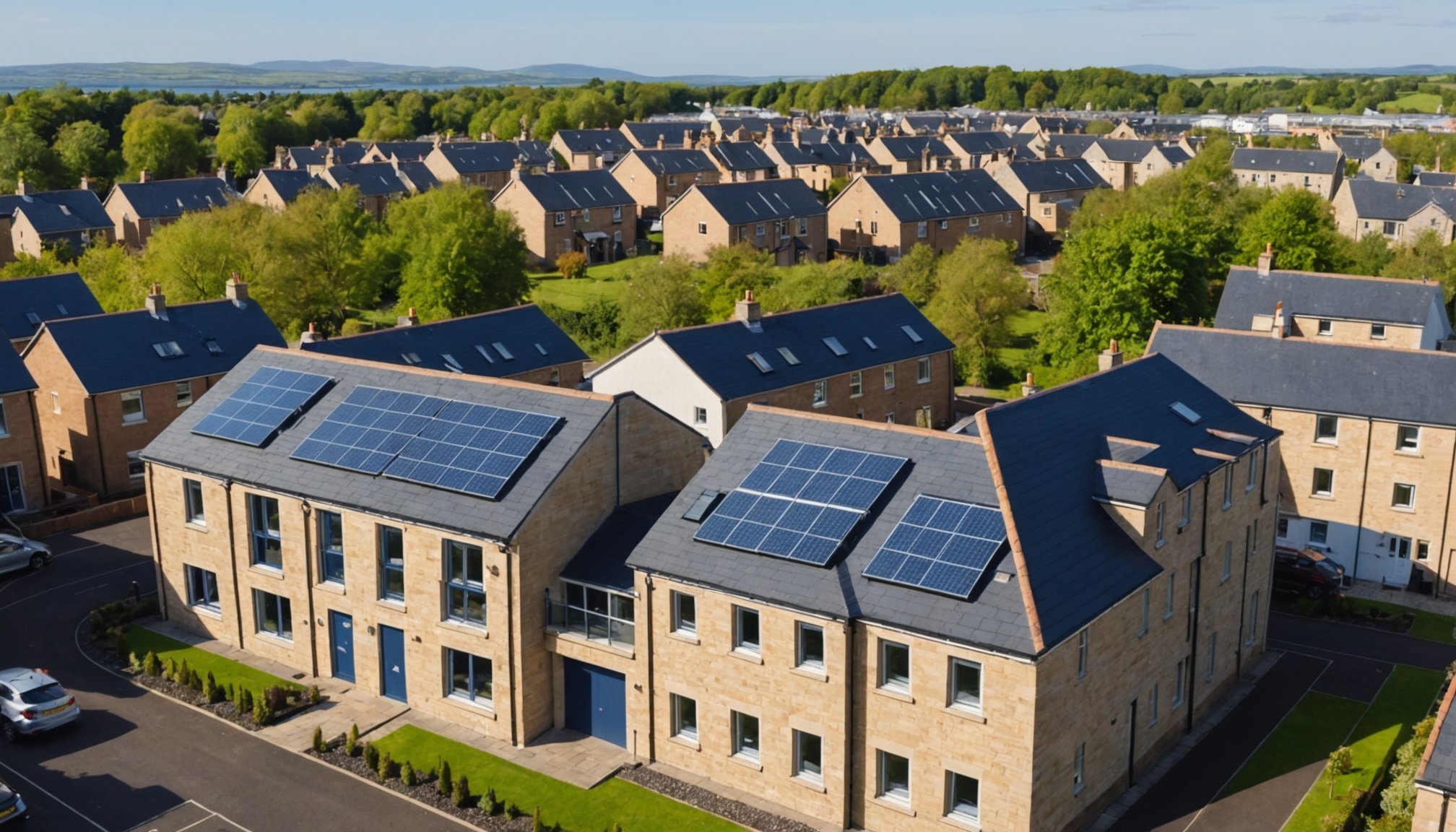Overview of Scotland’s Energy Efficiency Standards
Scotland has made significant strides in enhancing its Energy Efficiency Standards. Historically, the country has acknowledged the importance of reducing carbon emissions and improving building efficiencies. The evolution of these standards reflects a broader commitment to sustainability and climate goals.
The Scotland Construction Regulations have been pivotal in this transformation. Initially, these regulations focused on minimizing energy consumption in new buildings. Over the years, there has been a marked shift toward more rigorous requirements, ensuring that both residential and commercial structures contribute to a greener future. The central aim is to create a built environment that is not only efficient but also economically viable and resilient to climate impacts.
This might interest you : Navigating Planning Refusals: A Homeowner”s Guide to Challenging Council Decisions in the Lake District
Key objectives of Scotland’s Energy Efficiency Framework include reducing greenhouse gas emissions by 75% by 2030 and achieving net-zero by 2045. These targets demand substantial changes in construction practices and materials.
For developers, the legal ramifications are significant. Compliance with these regulations is not optional. Failure to adhere to Scotland’s Energy Efficiency Standards can result in penalties and project delays. Therefore, understanding and integrating these requirements into project planning is critical for successful real estate development in Scotland.
In the same genre : Transform your property listings with stunning real estate photography
Practical Steps for Compliance
Navigating compliance with modern energy standards requires a strategic approach that combines practicality and innovation. Compliance Strategies start with an exhaustive evaluation of current construction practices. Begin by identifying areas where energy efficiency can be enhanced, focusing on insulation, ventilation, and other fundamental elements. This initial assessment sets the foundation for implementing effective Energy Efficiency Implementation measures.
Once the assessment is complete, the integration of energy-saving technologies and materials becomes the next focal point.
Methods for Integration
- Adopt advanced insulation materials: Enhance thermal performance while reducing energy loss.
- Incorporate smart systems: Use programmable thermostats and energy management systems to optimise energy use.
- Utilise renewable energy technologies: Solar panels and wind turbines can significantly lower dependency on non-renewable sources.
Collaboration plays a pivotal role in ensuring successful implementation. Engaging with energy assessors and compliance consultants provides invaluable insights into the latest technologies and regulatory requirements. These experts can assist in tailoring solutions that meet compliance mandates efficiently and cost-effectively.
Working alongside these professionals not only ensures adherence to regulations but promotes innovations that drive sustainability in construction projects. Ultimately, achieving compliance is a pathway to contributing to broader sustainability goals while also reaping economic benefits from reduced energy costs.
Case Studies of Successful Implementations
Exploring real-world examples can provide valuable insights into achieving successful compliance with standards. Let’s dive deeper.
Residential Projects
Residential projects often serve as prime examples of how best practices are effectively executed. An exemplary case showcases how proper planning and implementation can lead to significant compliance success. For instance, integrating energy-efficient systems within the architectural blueprint not only ensured sustainability but also compliance with environmental regulations. Residents noted improvements in energy costs and quality of living, emphasizing the importance of strategic design and compliance.
Commercial Developments
In the realm of commercial developments, compliance with regulations is both obligatory and beneficial. A case in point is a mixed-use commercial building that incorporated green building practices to achieve successful compliance. By adopting innovative HVAC systems and using sustainable materials, the project not only met regulatory requirements but also enhanced overall operational efficiency. Stakeholders reported increased tenant satisfaction and lower operational costs, making the project both compliant and financially rewarding.
Innovative Solutions
Innovation often plays a crucial role in compliance achievements. A forward-thinking project employed novel approaches like smart home technology and AI-driven energy management systems. These solutions not only met compliance standards but also offered enhanced functionality and monitoring capabilities. Harnessing technology can thus transform compliance challenges into opportunities, showcasing the importance of adopting best practices.
Challenges in Meeting Energy Efficiency Standards
Navigating compliance challenges in energy efficiency often presents hurdles for developers. One primary difficulty lies in accurately conducting energy assessments. These energy assessment barriers stem from the complexity of gathering reliable data and interpreting it accurately. Energy audits require significant technical expertise and precise data collection, which can pose substantial challenges, especially for smaller organisations lacking resources.
Financial implications further complicate compliance. The initial investment for energy-efficient technologies can be daunting. While the long-term savings potential is substantial, developers often struggle with upfront costs. Undertaking a cost-benefit analysis is crucial, but it may reveal high initial financial outlays, deterring some from proceeding.
Developers also face regulatory hurdles. Striking a balance between comprehensive standards and achievable targets is complex. Negotiating with local authorities can provide some relief. Understanding negotiation tactics, such as demonstrating economic and social benefits or proposing phased implementations, could aid in easing regulatory demands.
Ultimately, addressing these challenges requires a strategic approach. Identifying potential barriers early, assessing financial viability, and engaging proactively with regulators are essential steps. These actions can facilitate a smoother path towards compliance and ensure that energy efficiency standards are met effectively.
Resources for Developers
In the evolving landscape of energy regulation, it’s crucial for developers in Scotland to leverage the right developer resources. Support organizations like the Scottish Environment Protection Agency play a significant role by providing regulatory guidance and vital information on compliance. Partnering with such bodies ensures adherence to legal mandates and maximizes project efficiency.
Scotland offers numerous funding opportunities that developers can tap into. Various grants and incentives are available, primarily focused on promoting sustainable practices and renewable energy development. By aligning projects with these incentives, developers can significantly reduce overhead costs and invest more in innovative solutions.
Developers must also utilize comprehensive tools and software tailored for energy assessments and compliance tracking. These digital tools streamline the process of measuring energy efficiency and provide robust solutions for monitoring regulatory aspects. The use of such technologies not only aids in meeting compliance requirements but also enhances project planning and execution.
By integrating these developer resources, developers can navigate the complexities of energy regulations more effectively. Regulatory guidance accessed through these platforms highlights Scotland’s commitment to a sustainable future, ensuring that projects align with broader environmental goals and standards.
Future Trends in Energy Efficiency Standards
In recent years, emerging technologies have begun shaping future standards in energy efficiency. The integration of smart meters, AI-driven energy management systems, and battery storage solutions are likely candidates to influence new regulations. These technologies promise to optimise energy use, reducing waste and improving overall sustainability.
Sustainability trends are pushing the boundaries of traditional energy models, forcing developers to adapt to more stringent requirements. Predictions indicate that legislation will increasingly enforce these sustainable practices. Future laws are expected to mandate tighter energy codes, demanding greater innovation and compliance from the construction industry. For developers, this means new opportunities and challenges in aligning projects with anticipated changes.
Sustainability has also become central to upcoming construction methods. There is a growing emphasis on using eco-friendly materials, renewable energy sources, and minimising the carbon footprint of buildings. Embracing these practices not only addresses environmental concerns but often results in cost savings and increased property value.
As regulation evolves and technologies advance, the significance of adhering to sustainable methods will magnify. Early adoption may grant developers a competitive edge, aligning their efforts with the trajectory of future standards in energy efficiency.











